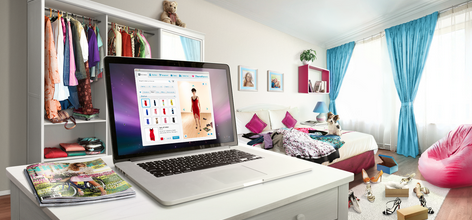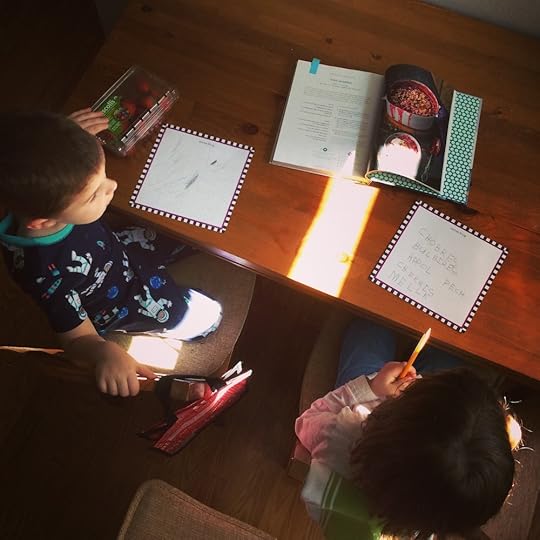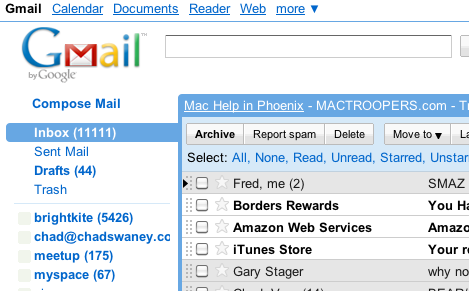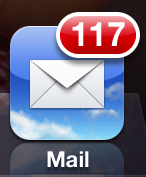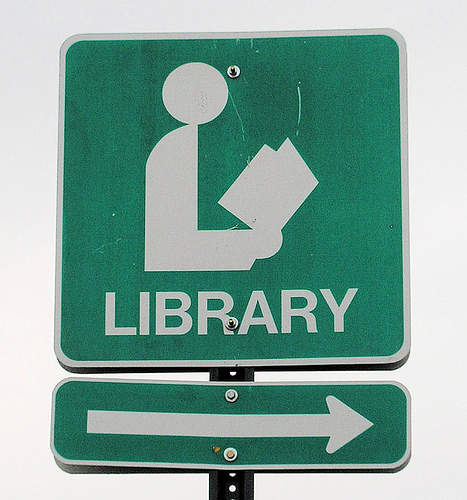Randi Zuckerberg's Blog, page 47
May 7, 2014
Teaching Kids How To Just Be
When kids are overexcited, in the middle of a temper tantrum, or having trouble with their homework parents often tell their kids to “relax and calm down.” When they are wiggling in their desks and having difficulty sitting still, teachers frequently say to their students “just focus and pay attention.” Or when children are too hyped up at the end of the day and just can’t fall asleep, exacerbated parents yell to their kids, “just lie still and go to sleep.”
Parents and teachers are not wrong for wanting these desired behaviors in kids; they are just unskillful in their approach. It is easy to get frustrated with a child who just isn’t calming down, but the truth is, many kids have never actually been taught the skills in how to calm down.
Dr. Daniel Siegel, a neuroscientist and director of the mindfulness programs at UCLA has said, “It doesn’t matter what you are teaching kids if they don’t know how to pay attention.” Many assume that it is a natural rite of passage growing up to learn how to focus attention, regulate thoughts and emotions, and produce desirable behaviors, but the truth is, these skills need to be taught to kids just as they are taught walk, read or ride a bike.
There are many different organizations, such as Mission Be, that are making it their mission to provide kids with the tools to slow down, find their breath, and connect with their bodies thus teaching them how to calm down. By going into schools, as well as offering programs for parents, and teaching lessons in mindfulness, programs such as these provide the ultimate in social and emotional learning by bringing children and families the opportunity to develop lifelong skills that will benefit them in everything they do.
Mindfulness, an ancient wisdom contemplative practice, has found its way into many facets of our modern society, and is scientifically recognized as a valuable tool for increasing executive functioning, emotional regulation and an overall sense of well-being. Cultivating a mindfulness practice allows one to live their life with greater awareness, attention and intention; it is about being in the present moment, rather than ruminating on the past or having anxiety about the future, as well as developing greater gratitude and compassion. Mindfulness utilizes the breath as the anchor to the here and now, helping to get out of the stories in your head and into the experiential feeling in the body, thus bridging the heart and mind in congruence.
We do not live in a culture that fosters slowing down; the pace is always fast, we’re on to the next task before completing the current one, and we generally are on autopilot as we float through our day. The problem with this unconscious lifestyle is that without increasing awareness of the present moment, we are unable to be active participants in our lives and live largely disconnected from ourselves and others. Everyone, including children, has the capacity to learn greater presence, how to being still and generate greater awareness of what is going on inside of them and what is going on around them.
Mindfulness is the easiest thing to do, just the hardest thing to remember to do. It’s always a great reminder to take a minute and just breathe. As parents and teachers role model this kids will get these skills reinforced in how to live a more peaceful, conscious and balanced life.
Posted On 5/7/14
Written by Joree Rosenblatt
 Joree Rosenblatt has a Master’s in Counseling Psychology and is a mindfulness educator in the Bay Area. In addition to working at a K-8 private school teaching mindfulness to students, she teaches her original curriculum to adults, and onsite in corporations, in the Fundamentals of Mindfulness and Mindful Parenting. Joree’s true passion is raising her two daughters, mindfully of course…well, most of the time! Even though she already is a rock star mom, Joree practices mindfulness every day, and when all else fails, she remembers to take a moment and just breathe.
Joree Rosenblatt has a Master’s in Counseling Psychology and is a mindfulness educator in the Bay Area. In addition to working at a K-8 private school teaching mindfulness to students, she teaches her original curriculum to adults, and onsite in corporations, in the Fundamentals of Mindfulness and Mindful Parenting. Joree’s true passion is raising her two daughters, mindfully of course…well, most of the time! Even though she already is a rock star mom, Joree practices mindfulness every day, and when all else fails, she remembers to take a moment and just breathe.



 by
by 
The post Teaching Kids How To Just Be appeared first on Dot Complicated.
May 6, 2014
6 Reasons Why Online Shopping Beats Traditional Shopping
Online shopping is all the rage at the moment, in fact you probably always hear your friends raving about it. Now, there are two types of people, those that love online shopping and those that don’t see the point. Let’s explore some reasons for why online shopping is amazing and how it beats physically going into a store.
This article will may even convert those of you who don’t quite get shopping online – most of your favorite shops probably have a website, and once you have finished reading this article, you’ll feel inclined to have a little browse!
1. Unlimited Time
Have you ever walked into a shop and then been consistently pestered by sales assistants? Sometimes all a girl wants is to look around without being asked a thousand questions. Online shopping allows you to look at clothing and take as much time as you want before committing to buying anything. You can put outfits together, compare dresses and you won’t have sales assistants tailing you throughout the store.
You can also visit several sites at once to see which store is offering the best price, and the best thing about this is that you don’t lose the item. How many of you have left an item behind, thinking that you will find something better, only to come back and find that it has been sold? You don’t have to worry about that happening with online shopping!
2. No Queues
If you have ever been shopping on a Saturday afternoon, then you know just how stressful queues can be. You can sometimes find yourself having to wait in line just to try something on! Shopping is supposed to be fun, not exhausting. With online shopping, you can add an item to your basket and pay instantly. Think about the amount of time that you spend waiting in queues just waiting to pay for something. Now add up all of that time and think about all the things you could have done instead! Let’s face it, you’re not going to get any of that time back – and did I mention, queues make me seriously stressed!
3. Commitment Free
With online shopping, you can add things into your basket as you shop, and then view your total. This allows you to remove items that you may have added on an impulse (this is me – all the time). When you are standing in a queue in a shop, you can’t really stand there and weigh your options for needing something. I’m sure you’ll get some angry looks from the people behind you. Online shopping allows you to review what you are planning to buy before you hand over the cash. If the total cost is way over your budget, you can simply remove items from your basket – embarrassment free!
4. Changing Room Free Zone
Have you ever tried on a dress in a shop, absolutely loved it, and then brought it home only to find that you hate it? People often wonder how they can go from loving something, to absolutely hating it. Changing rooms in stores often have fluorescent lighting. Colours are distorted and mirrors are placed strategically to deceive you. You can try things on and love them, but when you bring them home, they can look entirely different. We all know what that disappointment feels like!
Changing rooms are also tiny, hot and stuffy. It feels like being trapped inside a cell, having said that, even prison cells are bigger than changing rooms! You also have sales assistants waiting outside so you feel pressured to try things on very quickly. Online shopping allows you to purchase items, and then try them on at home. If you don’t like something, you can easily send it back which eliminates the dreaded changing room dilemma.
5. Bargains
Websites always have deals running which you often can’t find in store. For example, they may be offering 10% off new items, or free next day delivery. This can work to your advantage when you need something, because you know that they will always have some kind of deal going on. If you like an item, you can add it to your bookmarks and come back in a few days and find that it is on offer. You may think that things like free delivery do not matter, and that you can just travel to the store to buy items instead. However, think about how much it costs to actually get to the shop. The cost of petrol, bus fare, or even the effort of walking. This contributes to the cost of the item, therefore, free delivery is a godsend!
6. The Excitement
The ultimate advantage to shopping online is the fact that your items are brought right to you. Life doesn’t get any better than that does it? You can browse and order from the comfort of your own home, and then have the clothes sent to you. Imagine the excitement you’ll feel when you come home to a load of parcels. It feels like an early Christmas!
So there you have it ladies and gentlemen, online shopping wins every time. It is convenient and less time-consuming. You’ll also find that it is more enjoyable. Even the anticipation of waiting for your clothes to arrive feels good. Now, get shopping!
This article was written by Qurratulain Zaheer, an avid online shopper and lover of all things fashion related. She recommends ChicksRule for their great online deals!



 by
by 
The post 6 Reasons Why Online Shopping Beats Traditional Shopping appeared first on Dot Complicated.
April 23, 2014
Why Busy People Get More Done And How You Can Too
When you don’t have a plan for how you are going to spend your day, you’ll usually find yourself wasting the moments you have to make a difference.
That’s the secret of being busy. That’s why busy people get more done. Because they are already moving.
When you already have things to do it’s easy to see what is a priority and what can wait until later. When you’re on the go, your brain and body are focused on one primary thing, getting things done.
Everything else is just a distraction.
When you have all the time in the world, nothing really matters. Urgency isn’t pounding at the back of your brain. You don’t have to make decisions about priority and effectiveness. You can sit and wait and think and plan and procrastinate.
Which is why being busy matters. Being in the office longer than everyone else doesn’t matter. Staying until your boss goes home doesn’t matter. Having a long to-do list doesn’t matter. Being busy pursuing your dream does matter.
Busy people use every opportunity to be productive. Here are a few ways to managing being busy:
When you have an idea about a new product to check out or an idea about doing something more efficiently, write it down and schedule a time to complete your researching of that idea.
Schedule daily and monthly times to review through your list of big ideas and prioritize what can be done now. Start working — even a little bit — on what matters.
Stay on a schedule. Get out of bed at the same time. Start working on the hardest thing you have to do that day first.
Ask for help from those who have a track record of getting things done despite being busy. The advice you hear will be invaluable to your ongoing success.
Use smart tools to remind you of your priorities. Take anything that needs to be remembered and a sign it ado date and priority and your technology.
When you get a little bit done each day you end up achieving a lot.
It might not seem like you’re making progress — that you’re too busy to even think straight — but you’re building a foundation of productivity and progress that will get you to where you want to be faster anything else you can do.
Busy people get more done because they’re focused on getting things done.
Posted on 4/23/2014
Written by: Dan Waldschmidt
 Dan Waldschmidt is an international business strategist, speaker, author, and extreme athlete. His consulting firm solves complex marketing and business strategy problems for savvy companies all over the world. Dow Jones calls his Edgy Conversations blog one of the top sales sites on the internet. He’s been profiled in Business Week, INC Magazine, BBC, Fox News, The Today Show, and Business Insider, has been the featured guest on dozens of radio programs, and has published hundreds of articles on progressive business strategy. He is author of the wildly popular Edgy Conversations: How Ordinary People Achieve Outrageous Success.
Dan Waldschmidt is an international business strategist, speaker, author, and extreme athlete. His consulting firm solves complex marketing and business strategy problems for savvy companies all over the world. Dow Jones calls his Edgy Conversations blog one of the top sales sites on the internet. He’s been profiled in Business Week, INC Magazine, BBC, Fox News, The Today Show, and Business Insider, has been the featured guest on dozens of radio programs, and has published hundreds of articles on progressive business strategy. He is author of the wildly popular Edgy Conversations: How Ordinary People Achieve Outrageous Success.



 by
by 
The post Why Busy People Get More Done And How You Can Too appeared first on Dot Complicated.
Making Sure Internet Explorer Doesn’t Replace Actual Exploring
Honey, you’ve had enough time on the iPad for now. Why don’t you go play for a little while? I recommended to my five year-old daughter.
But there’s nothing to do! She responded/complained predictably. And you’re on your phone, she added.
Ouch.
She was right. For all of the times I am telling her that she could be playing with her dolls or throwing a ball around outside with her brother, for the endless reminders about the myriad of board games she has and the library of coloring books and art supplies to go with them – I must look like a pretty big hypocrite to my child.
Though my days of playing with Barbie, Ken, and Skipper and building elaborate condos for them out of my wooden blocks has long passed (Three’s Company was quite popular at the time and the dynamic of their living situation seemed perfectly normal to me), I still catch myself spending much more time on my phone than I could – and likely than I should. I have written before about my overuse of apps like Instagram and Facebook, and how I felt that they were impeding my connection with my family, and have successfully curtailed my use (abuse?) of them since.
While there are times I have found myself falling back into old habits, I have been able to reel it back with ease once I see it happening.
But while my phone may not have been pointed at my children quite as much, it was quite often still in my hand.
While I told my children to read a book, I was scrolling through the news on one of the apps on my phone, or reading a book I’d downloaded on my Kindle, rather than the latest hardcover I’d been coveting or reaching for my copy of the New York Times that was usually sitting on the dining room table. Though it was beautiful outside and I’d suggested that the kids enjoy the outdoors by playing ball in the backyard before dinner; hours earlier, I’d sat in the pick up line at school in my air-conditioned car browsing on Gilt and ordering groceries on Fresh Direct, rather than stepping out and enjoying the sunshine and chatting with fellow parents I’m friends with. To be honest, I’d actually been texted with one of them who was in the car just behind me!
And then I had the above interaction with my daughter. And like many epiphanies, mine didn’t hit me the first time we had this exchange. Or the second. Perhaps the tenth?
You’re right, I told her. Once she got over the shock (and glee) of my statement, she added, Now what?
And so together we came up with answers to that question.
On sunny days, we go for walks, often with both of the children bringing one of their favorite dolls or animals along in their strollers, or we bring brown paper bags out and go for Scavenger Hunts with each of us taking turns deciding what we should look for next among the flowers, leaves, rocks (and hopefully not poison ivy!) that we can explore and discover near our house. We plant vegetables and flowers together, and go to the playground or to cheer on their father at one of his softball games.
When the weather isn’t quite as cooperative, we have endless rounds of hide-and-seek with balloons all around the house, assemble art projects we’ve gotten from the most recent Kiwi Crate we received or from our own imaginations. We go to the library and take out books – picture books for my son, early readers for my daughter, and the most recent hardcover memoir for me, and they often “help” me - though that is a strong word for it – cook dinner.
There is a construct of writing that insists that we show – don’t tell, and so much of that also reflects our responsibilities as parents. The old adage of do as I say, not as I do seems as dated as the saying itself. Children look to us, not just for direction but also to lead by example.
So there are times when they see their parents sitting at the dining room table with steaming cups of coffee on a Sunday morning with The Times spread out before us, and there are moments when we are looking at our phones or laptops checking our email. There are moments of the day that we are playing games like ping pong and basketball that involve a ball and a net, and others that call for Netflix.
And going low-tech or no-tech is both good and fun, but I’m not going to pretend that we’re at 30,000 feet and have turned off all electronic devices for the remainder of our flight through their childhoods.
There is a time and a place for both – just not all the time, and not every place.
After all, where would I get ideas for all of those art projects without Pinterest?
Posted on 4/23/2014
Jamie Krug is a writer, wife, and stay-at-home-mom with a full-time job as the CMO (Chief Medical Officer) of her family. Her work has been featured on the Huffington Post where she is a regular contributor, as well as AOL. She is also a regular contributor to Dot Complicated, and has been featured in Time To Play magazine, iVillage Australia, MamaMia, and the 28 Days of Play project.
She has also been published as a contributor in the nonfiction anthology The HerStories Project. She is mother to an inquisitive daughter named Parker and the mischievous-grinned Owen.
Her blog, Our Stroke of Luck, tells the story of her family’s day-to-day struggles and triumphs in the wake of the devastating and still largely misunderstood rare diagnosis her son received at birth.
She prides (embarrasses?) herself by stating out loud what other mothers may feel but wouldn’t dare say… You can follow Jamie on Twitter @JamieKrugAuthor, on Instagram @jamiekrug, or on her Facebook page.



 by
by 
The post Making Sure Internet Explorer Doesn’t Replace Actual Exploring appeared first on Dot Complicated.
April 16, 2014
How I Lost The Dreaded Pregnancy Weight
There are very few things in life more difficult than losing weight, especially as you get older. It takes dedication and a commitment to make life changes. As humans we are creatures of habit and unfortunately we pick up bad habits rather quickly.
I recently had my second baby and as a normally petite 5’2” woman, pregnancy has never my strong suit. I also have a giant husband who measures in at a whopping 6’5”. Together we produced two very large, tall, boys.
Going into this pregnancy I knew it would be my last so I didn’t restrain myself from any cravings. If I wanted a cookie, I was going to eat a cookie… okay, maybe two cookies – who’s counting anyways? I also headed up the Catering department at a luxury hotel so indulging in amazing food was not something I was ever going to turn down. Pregnant women like to joke they are now eating for two, but let’s be honest here; the second person is practically the size of a melon. I’m sure they don’t require a whole cookie just for themselves.
I admit my love for food is unparalleled, pregnant or not. This obsession coupled with hypothyroidism, hormone treatments, and an intense sweet tooth caused me to gain nearly 20 lbs. before I even became pregnant. During my pregnancy I gained another 40lbs, so I knew once this baby arrived – I would have my work cut out for me. In my last trimester I put together a weight loss game plan. I knew if I waited I would get caught up in the daily struggles of taking care of a newborn and my goals may have been sidelined.
Let me first state that I am not a weight loss expert, a doctor, a nutritionist or even a personal trainer – I am just a busy mom who is passionate about my health and the example I set for my boys.
My first step was writing goals down and sharing them with friends and family. I am a firm believer in sharing your goals so you’re held accountable for them. Plus, you can use the encouragement and support you receive as inspiration to continue on your path.
Next, I created a realistic timeline. It takes nine months to put on the weight and it very well may take nine months (or longer) to take it off. Being a mom is stressful enough so be sure to make attainable goals, as you want your weight loss to be a healthy one.
I then downloaded some helpful apps to track my progress and started following some fitness blogs. Lastly, I continued to stay true to my goals and myself. If I cheated one day, I made a conscious effort not to do it the next day or any future days.
Below are tips that helped me in reaching my goal weight:
I wrote down my goals and shared them.
I chose to nurse my son. Nursing, if you can and choose to, will help you lose up to 500 calories a day! This helped tremendously with my initial weight loss.
I toned down my portions. Eating off of a salad plate rather than a dinner plate helped me gain perspective on my portion sizes.
I eat very little dairy, refined sugars and gluten. Diary and gluten can give your baby gas when nursing so giving them up was a win for both my baby and me. I know gluten-free products can be expensive so try substituting one item at a time that your budget allows.
Sweets are now just an occasional treat, not part of my daily meal plan. I do miss my cookies though!
I signed up for a Mommy Fit class. These classes are a great way to incorporate your baby into your fitness routine, and are the perfect networking opportunities for you to meet other new moms.
I enjoy running as a cardio workout, so I signed up for future races to keep my goals ongoing.
I follow fitness / healthy lifestyle blogs religiously. Three of my favorites: New mom, Kelsey Byers Fitness, Becci Prather Fitness, and Angela Carpenter, The Yoga Life Blog. All give recipes, food recommendations, fitness routine suggestions and post videos to show the ‘How To.’
I have two apps that I also use religiously: Nike + Running App to track my miles and running goals, and My Fitness Pal to track my calories, food intake and exercise goals.
When the baby naps I try to use that time to work out, whether it’s simple floor exercises, push-ups or using hand weights.
This one may sting a little… I consume very little alcohol. Alcohol is a complete waste of calories and it also prevents me from nursing my son. I now consider it only as a treat on special occasions. The nightly glass of wine for relaxation is now a thing of the past.
Today my son is almost five months old and my progress has exceeded my expectations. When I checked into the hospital I weighed 185lbs, I currently weigh 120lbs. I feel amazing but most importantly – I feel healthy.
Posted on 4/16/2014
Holly is a native Texan but currently resides in the great city of Chicago with her husband, two sons and their Chihuahua. She spent over 10 years in Marketing, Communications and the Luxury Hotel Industry. She is now a Freelance Writer, www.hollyrust.com, which allows more time for sanity and family. She is the Co-Founder of Mother’s Guide To Sanity, a humor blog where she shares stories about raising a rambunctious toddler and a nocturnal newborn, all while trying to manage a career. Holly considers herself the ultimate foodie and loves to travel. She is also an avid runner and completed the 2011 Chicago Marathon. She plans to run the Chicago Marathon again in 2014.



 by
by 
The post How I Lost The Dreaded Pregnancy Weight appeared first on Dot Complicated.
April 12, 2014
Hey Co-Workers, Don’t Disturb My Man
Last night, my boyfriend didn’t get home from work until 8 p.m.
Considering his workload and long-ish commute, 8 p.m. really wasn’t that late. As a former ad gal myself, I try to remember long hours come with the territory. And with long hours come dinners alone, but those hours also give me the chance to catch up on “The Mindy Project” on my DVR without any interruptions or commentary—and admittedly, that’s a perk.
But last night was different. Last night bothered me. Not even 10 minutes after my boyfriend had walked through our door, his phone started buzzing. He hadn’t even had a chance to warm up his dinner. I looked down at his phone to scope out who was texting (we all do it) and saw it was a co-worker of his. She had work questions and, well, he needed to answer.
Nearly 45 minutes later, they were still texting. And I was becoming increasingly irritated. It wasn’t irritation over him talking to another girl—at age 29, I’ve learned that’s rarely worth it—but it was a sheer and determined irritation nonetheless. After a 12-hour day, it still wasn’t enough. His job still demanded answers and, as such, he was still working.
What Would Germany Say?
Last year, in an attempt to ward off burnout, the German Labour ministry enacted a rule I know I could live with. The country banned managers from calling or emailing employees after work hours, unless there was a true emergency. A few months later, The Huffington Post UK reported experts had called on British officials to enact similar rules. And just recently, in France, a law was passed requiring workers to switch off their phones after 6pm.
While European countries are making real efforts to help companies respect employees’ after-
hours boundaries, the United States made the news last week for a related, yet completely opposite, headline. Career website Glassdoor conducted a survey that found only 25 percent of American employees with paid time off took all of their vacation days last year. Beyond that, 15 percent of the surveyed group took no vacation days at all. No vacation days. All year. What?
How We Fix This
While it doesn’t seem realistic many American companies will follow suit any time soon, as wives, husbands, girlfriends and boyfriends, we can all take steps to set comfortable boundaries and ensure our loved ones focus on what really matters within the walls of their home when they’re physically at home. Here are a few ideas to do just that.
1 / Create An Out of Office
One of the best work/life balance strategies I’ve come across on the website I founded, I Want Her Job, is to set an out of office reply for any time you are truly off the clock. Think about it: you’ve received an out of office reply when others are out on vacation or in meetings, so why not rely on the same tool when setting your personal schedule? A note as simple as the following will work. “I’m out of the office for the day and will be responding to emails when I return at 8 a.m. tomorrow. If your request requires immediate response, call me at XYZ.” This way, you’re giving others an option to call you if there really is an emergency, but you’re also setting the expectation up front that you’re not checking emails or responding after hours.
2 / Turn On ‘Do Not Disturb’
A favorite feature of my iPhone 5C is its “Do Not Disturb” feature, which allows you to only let important contacts get through while the rest will ring (or show up in your inbox) on silent. I turn this on the moment I get home and turn it off when I show up to work in the morning. Best of all, it’s easy to set up. Choose the contacts you want to be able to reach you by favoriting them; then, in Settings, toggle the switch to say “only favorites” get ahold of you when you have your “Do Not Disturb” on. It’s a reliable way to make sure your parents or kids can reach you, but that needy clients who really only want to chat about personal issues can’t touch you during your long-overdue date night.
3 / Set ‘No Phone’ Zones
Maybe the ideas above are a little too much. Maybe you don’t mind answering a few work emails here and there, but don’t want it interrupting your child’s goodnight story on the regular. What should you do then? It’s as simple as instituting a “no phone zone” in your house: allow phones in the living room, but outlaw them in the bedroom, at the dinner table and in kids’ rooms. That way your boundaries are clear, but neither you nor your loved ones will feel guilty for responding if they feel the itch.
As for last night, just as our heads were about to hit our pillows, my boyfriend asked what was wrong (I have THE worst poker face). I was honest with him, and he responded by confessing he feels guilty because he’s not working until 11 p.m. like his co-workers do so often.
But I won’t let his guilt become mine. Like it or not, a “no phone zone” will soon be instituted in our home. There may be some immediate growing pains, but I want our dinners, walks with our dog and bedtime viewing of “Shark Tank” to come without that nagging, reoccurring buzz or ring.
Posted on 4/11/2014
Written by Brianne Burrowes
Brianne Burrowes is founder and editor in chief of the award-winning work/life website for women, I Want Her Job. She currently works in sports marketing in Phoenix and prior to that, she served in digital roles at a Los Angeles advertising agency and at her alma mater. She loves trips home to Montana, steaming lattes and spending time with her baby ewok, Zoe the shih tzu. Follow her @brianneburrowes.



 by
by 
The post Hey Co-Workers, Don’t Disturb My Man appeared first on Dot Complicated.
April 4, 2014
If You Say You’re Not Going To Check Your Email, Then You Better Not Check It
I am the girl who cried wolf. Unlike the shepherd boy in Aesop’s fable, I am not repeatedly tricking people into thinking a wolf is attacking my flock of sheep. I don’t own any sheep, but I do have an email account. And my auto-reply, which is set to be on permanently, says that I only check email messages a few times per week. But I read and respond to emails multiple times per day—oftentimes continuously.
Similar to the villagers in the fable who eventually ignored the shepherd boy’s call for help even when a wolf really was attacking his flock, people who regularly send me emails no longer pay attention to my automatic response. They view it as a something to disregard and delete—and rightly so. Sometimes, I reply to their emails so quickly that my actual response arrives before the auto-message!
The problem I now face is that the “wolf” really is attacking. In other words, I am finally restructuring my life so that I don’t check email as often. Will anyone believe me? I want to spend more time relaxing with my newlywed husband. I want to explore the outdoors more, especially as warm weather approaches. If you have never been tubing down a river on a hot day in Texas, I encourage you to Google it if you need to, and then add it to your list of things to do—even if that means not responding to an email message—or possibly one hundred.
“117” reports the unread email notification on my smartphone. In life, I have learned that all I can ever do is my best. Because “my best” sometimes means that I miss important emails, my auto-reply reads, “If I don’t respond to your message in a reasonable amount of time, please resend it.” I appreciate when people actually do. I can’t possibly keep track of everything that comes into my inbox and also make time for my friends, family, and passions. Focusing too many hours on answering other people’s emails about their relationships and books doesn’t leave much time for me to nurture my relationships and to write my own books.
I used to take it personally when emails I sent to others were seemingly ignored. But, now, I know from experience that failure to respond to an email doesn’t equate to ignoring or a lack of caring. It usually just means that person is busy. I am busy, and I simultaneously care a lot. I have just learned to add my name to the list of people I care about. I sometimes think of it as taking time to answer my own emails—written to myself. These metaphorical messages include the subject lines “Breathe, Jenni” and “Do something fun today.” If I answer everyone else’s messages on their time schedules, I can’t respond to my own needs. That is why I am committing to a new and more realistic email goal. During the workweek, I will check my email twice a day at a maximum. Gulp. Even just writing that is scary.
What if I miss something urgent? My auto-response will attempt to cover for that, listing contact information for my assistant and booking agent. But sometimes that won’t work. (As I mentioned, I have trained many to simply ignore my auto-reply.)
Making a big change like this requires support and accountability, which, in part, is what this article is about for me. In fact, as an alert to those who send me frequent emails, I will include a link to this blog entry within my new and improved email auto-response.
Yes, I plan to create an auto-response that serves me better. I was recently inspired in the email department by Lisa Davis, Creator, Host, & Producer of It’s Your Health Network. In her auto-reply, she honestly explains that she is “a one woman operation” and goes on to say, “Someday I might have an assistant. Until then, your patience is greatly appreciated.” Lisa’s auto-response is authentic, personable, and to the point. I pay attention to messages like that.
With my auto-responses, I have often missed the “to the point” point. As a professional writer (as well as an expert analyzer), I sometimes over-explain. One of my recent auto-responses described how I had found tremendous peace when I disconnected from all electronic devices on my honeymoon in New Zealand. I went on to explain how email tends to drain my creativity. What I now know is that no one reads auto-responses that carefully. I can’t tell you how many times someone saw the word “honeymoon” in my auto-reply and quickly wrote back, “I hope you are having fun on your honeymoon. Tell me all about it and send pics!” Now, in addition to answering the original email, I was being asked to send vacation photos.
Others saw the word “honeymoon” and wrote something like: “Sorry to bother you during this special time, but can you please have X to me by Friday?” Really?!
Our world has clearly lost touch with boundaries in regard to personal availability. So, it is up to each of us to set our own unique limits. I have a friend whose spirit is positively fueled by intense e-connection. But that’s just not—and will never be— me. Like I mentioned earlier, I need to frequently shut down my email program and do something unplugged like tubing down a river. Even though my new waterproof smartphone case allows for emailing while floating, I choose to live instead. That’s being true to myself—and my auto-response. No more crying wolf.
Posted on 4/4/2014
Jenni Schaefer is an internationally known speaker, accomplished singer/songwriter, and bestselling author. She has appeared on shows like Today and Dr. Oz, as well as publications ranging from Cosmopolitan to The New York Times. Her first book Life Without Ed was just released as a tenth anniversary edition, including audio. Others include Goodbye Ed, Hello Me and her latest with Harvard Medical School, Almost Anorexic: Is My (or My Loved One’s) Relationship with Food a Problem? Jenni lives in Austin, Texas, where she can often be found exploring the outdoors with her newlywed husband—not checking her email account. For more information: JenniSchaefer.com.



 by
by 
The post If You Say You’re Not Going To Check Your Email, Then You Better Not Check It appeared first on Dot Complicated.
April 2, 2014
“Go To The Library?” The New Face Of Research
My second grader had to do a report for school, her first substantive project she has had to do in the Age of Digital. Her work effort was to take the form of hand-drawn artwork on a poster board and, thanks to technology, a one minute video presentation.
She selected Babe Didrikson Zaharias, universally accepted as one of the greatest female athletes of all time. So when the handoff was made from teacher to parent, I was excited to be a part of it.
When we sat down to start, my daughter immediately pointed out that she had already “looked up” Babe, which I took to mean started to research her historical figure. “Did you go to the library?” I asked. “The library at school?” she responded. “Yes, did you go to the library at school for your project?” “Yes, Dad, of course, that’s where the computers are.”
Do libraries exist? I get that they physically exist in schools and towns across America, in fact there is a big one in my town, coincidentally off of Main Street. But do they conceptually exist? Are they relevant? Did it all fall apart in 1995? The sanctuary of the library dates back over 2000 years, serving a community’s seekers of knowledge and entertainment and escape through the organized collection of information- that is books- prepared presumably by smart and learned authors. Now it appears the library is as antiquated as the VHS and Walkman.
So I guess kids logically turn to the Internet for the answers. I asked my mom, the recently retired teacher of almost 30 years, what we did for MY second grade report. She first mentioned some thing called a set of encyclopedias that I guess we kept on a book shelf in the house. Hmmmmm. But then she said we would “go to the library”. And “go” meant getting in the car, finding a parking spot, returning old books, thumbing through the card catalog, walking the shelves, checking books out, and taking them home to read.
Ah, reading. I read books to learn when I was young. It was all coming back to me. Why don’t kids in the Digital Era get that? I mean, to this very day, I read, ALL the time. I read my CNN via my iPhone on my commuter train in the morning. I read ESPN.com like 5 or 6 times a day to make sure I’m abreast of the latest in sports. For work, I easily read an article or blog or both a day when I Google something I am need or want to learn about. And, I must read 100 texts a day. Kids today…
Back to Babe. I chose to let my daughter lead the way for her report. It was apparent that she had indeed “looked up” Babe. She could spout off 7 facts about her as if taking a test. I said “Where did you learn that?” She said “I’ll show you.” We then walked over to our computer and she navigated her way to her school’s site, then clicked here and there and entered her user name and password to get to a list of links to school-approved education-based Web sites, then clicked on the one she needed. And there it was, a 7 screen slideshow of Babe, and those 7 facts front and center. “Oh, and type in Wikipedia, too” she said.
Ah, Wikipedia, the beacon of all truth and knowledge. The answer. The be all end all. The silent killer of libraries as we knew them. Who needs researchers, scholars, academics, Nobel Prize contributors, copywriters, and editors to fill the pages of an Encyclopedia Brittanica when we have you, me, and anyone else who can contribute to Wikipedia our version of what a definition of something is. In fact, as of 2010, Encyclopedia Brittanica doesn’t feel the need to print versions of its work anymore after 300 plus years of annual editions. (Of note, this is not an indictment of Wikipedia, I too end up there all the time to “get the answer.”
This is merely a statement of the world in which knowledge is possibly provided by lay people and generally accepted to be true by those consuming it via scrolling rather than turning pages). One thing for sure, 100,000,000 people a month (that’s the trending number of visits) sure need Wikipedia.
Thanks to Wikipedia and the .Edu site, and a little love from Google Images, my daughter’s report turned out great. The 7 facts appropriately filled the outline that served as the talking points for her video. Her poster was inspired by the on screen collage that resulted from our “Babe Didrickson” search in Google. And the Digital icing on the cake was seeing my daughter’s presentation on the Digital whiteboard at Open House, cued up by her double tapping her name on the screen to stream the video file.
That was cool by the way. So maybe this Digital Era isn’t so bad after all… Having now experienced my child’s first real school project as a parent in the Digital Age, I can tell you for sure, she is Wikipedia smart.
In the continued battle of Dad (and Mom) versus Digital Devices, I think Digital ruled the day on this one. I accept that we accomplished the task at hand, rather expeditiously thanks to the Web. But did we cheat the process? What could have been a physical and intimate visit to the library as parent and child on a mission of learning was merely a 10 foot walk to the computer in our house. My wife and I are not willing to concede the journey of earning knowledge simply because of the ease of accessing knowledge; at least we intend to go down fighting. And because I was complicit in taking the easy road to learning about Babe, I felt the need to order my daughter a book about her, from Amazon of course. And the good thing is that I didn’t have to waste any of my Saturday getting in a car and driving to a bookstore, let alone go to the library, to get it.
Posted on 4/2/2014
Matthew J Beshear is a Dad. And a husband, too. And along with his wife, they struggle each day to find the balance for their children between an ever evolving world of digital, devices, technology, and instant gratification and breathing fresh air, interacting with other humans, and having conversations with family when going out to dinner.



 by
by 
The post “Go To The Library?” The New Face Of Research appeared first on Dot Complicated.
April 1, 2014
Are Parents Really Threatening Their Children’s Futures By Posting Bath Time Photos?
There has been so much put out in the world lately about how the future will look for our children, now growing up in the age of Instagram, Snapchat, YikYak, and Tinder.
These are all considered to be potentially dangerous apps, with concern weighing heavily on both safety and the repercussions of what having photos taken or rumors started as tweens or teens may have on our children’s future. How will colleges judge our children when a Bing search turns up a salacious rumor posted on Whisper or YikYak? What will future employers think when they see our offspring – whom we’ve tried mightily to raise as good, decent human beings – after Googling them turns up photos of our little angels at a college house party?
But there is a greater threat than any of these apps – or likely any other apps that may come along – and that is our children’s…parents. Yes, if you do the math, carry the four and divide by Pi, that’s us. Many people today are writing about how so-called “mommy bloggers” along wth just typical Facebooking and Instagramming parents are the true potential culprits that will bear the brunt of the responsibility for sinking the future success of our own children. The thought is, that while telling cute/exasperated/ hyperbolic stories of our three year-old daughter asking “Why does Daddy have a tail?” or regaling tales of our newly potty trained son wetting the bed yet again, causing us to have to launder his favorite My Little Pony sheets for the third time in a week, we are significantly altering their reputation and somehow jeopardizing their futures.
Clearly dating myself, when I’ve read about this concern, I always think back to Will Smith and DJ Jazzy Jeff rapping to “Parents Just Don’t Understand” – along with the 24 birthday parties I attended at El Torito the year I turned eleven, and countless rounds of “Coke and Pepsi” – and the lyric, I said “Mom, what are you doing? Your ruining my rep”/She said, “You’re only sixteen, you don’t have a rep yet.”
Are we responsible for our children’s reputations? Do we truly have a significant and harmful impact on them? Many people speak about keeping the anonymity of their children intact by leaving their names and photos out of articles they write, but with the technology available now, how much is that impeding the information being readily available to employers and college admissions officers? Surely, they will have my name, and in some cases my occupation, on my daughter’s application – couldn’t they just Google me too, and come up on the articles I’ve written and put two and two together?

Some of the best (worst?) photos I’ve posted
Even if I didn’t use her name, they would quickly figure out who I’m referring to, whether I use her full name, an initial, or a cleverly-disguised alias. The point here is not to argue whether or not it is right or wrong to put photos up on Instagram, or take into consideration whether or not we should withhold the names of our children in the anecdotes we tell on Facebook, it is whether or not it will have an impact on their future.
Personally, I say not really. By the time my children are applying to college in the mid-2020’s, everything will be online for everyone. For all we know, everything will already be offline by then and we will all be sporting GoogleGlass and have microchips implanted in our forearms and college interviews will be done via hologram. Instagram is the contemporary family photo album, Facebook is the new archive of family stories, and YikYak is to school-aged kids what note-passing was to us. The point is that we can only control so much of what is out there to be discovered without taking ourselves completely off the grid – a near-impossibility these days. Add to that the facts that not only are our children’s parents online, in many cases, their grandparents are online as well to post pictures and brag proudly about what their little darlings have been doing as of late.
I strongly believe that what is present online about our children can indeed pose a clear and present danger to their futures. I just don’t believe that these hazards lie in things like the Instagram photo I recently shared of my daughter in the tub with a beard made of bubbles. I don’t think future employers will rethink hiring her because they’re concerned she might be lackadaisical as a result of the time I tweeted that she tried to get out of going to school by proclaiming to me that her “weight was hurting” her that day.
I do believe that our responsibility to protect our children‘s futures should be concentrated much more heavily on instilling that awareness and culpability within them. It will not be silly stories about them in Kindergarten that will make those people who wield the power over their professional and collegiate careers take pause before sending out acceptance or offer letters to them – it will be the things that our children potentially post about themselves. Making a tacit assumption about basic parenting and common sense here, it is doubtful that people are going to be posting embarrassing things about their adorable and zany offspring once those kids are old enough to have Facebook accounts, cell phones, and Twitter handles of their own. There will come a time, when it will feel wrong to post these stories, as though we are invading our children’s privacy – either because we find ourselves hesitating before posting something, or because our child expressly tells us they don’t want us to anymore. And we should respect that.
But we need to teach them the importance of ensuring that they respect themselves, as well. We need to implore them to consider their futures; as far off as they may seem at the time, before posting, or tweeting, or whatever the next technological verb may be coming down the pike. We need to clearly and plainly explain to them the permanence of what they put out into the world about themselves, and the inherent dangers – both immediate and otherwise – in how it potentially may be used to harm them. There have also been plenty of experimental posts by parents and teachers we can show to our children, that have successfully gone viral in their attempts to showcase how far-reaching the Internet can be. Teaching these lessons, and instilling those values are our greatest responsibilities for ensuring that our children have their privacy and futures protected.
Throughout our valiant attempts to protect our sons and daughters, it’s much less important whether or not the former Fresh Prince of Bel Air had it right when he claimed that Parents just don’t understand. What should take precedence is ensuring that our children do.
Posted on 4/1/2014
Jamie Krug is a writer and stay-at-home-mom with a full-time job as the CMO (Chief Medical Officer) of her family as well as a Huffington Post Contributor. She is the mother to an inquisitive daughter, Parker; and the mischievous-grinned Owen. Her blog www.OurStrokeOfLuck.net tells the story of her family’s day-to-day struggles and triumphs in the wake of the devastating and still largely misunderstood rare diagnosis her son received at birth. She prides (embarrasses?) herself by stating out loud what other mothers may feel but wouldn’t dare say… You can follow Jamie on Facebook, Instagram, and Twitter.



 by
by 
The post Are Parents Really Threatening Their Children’s Futures By Posting Bath Time Photos? appeared first on Dot Complicated.
March 26, 2014
It’s Not Official Until It’s Facebook Official
By now we’ve all learned that it’s not really official – until it’s Facebook official. I say this jokingly, however there is some truth to this theory. People take their social media posts very seriously. They strategize and calculate the perfect time to post; whether it’s to announce a pregnancy, engagement, break-up, promotion, career goal, life goal or even something as simple as a work-out plan. I can’t tell you how many times a friend has shared information with me and then followed up with, “I haven’t posted it on Facebook yet.” This is generally code for: no one really knows so keep quiet!
Personally, I find that sharing my goals with friends and family on social media not only holds me accountable to my aspirations, but many times it inspires those who are chasing the same goal as I am.
Three years ago I was considering running the Chicago Marathon. It was an item on my bucket list and I knew if I didn’t do it soon, it was probably not going happen. Having never been a consistent runner prior, I was concerned I was way out of my league – or just out of my mind. Before I posted my goal on Facebook I thought about it for weeks. Did I really want to post it? What if I wanted to chicken-out? Or got hurt? Or changed my mind? Or realized I was crazy? Will my friends think I’m a loser if I back out? These were all questions I pondered over night after night. I knew as soon as I posted my plan to run, I would undoubtedly have to. As we all know, there’s no turning back once it’s Facebook official.
Finally the over-achiever in me signed up and posted the news for all my friends and family to see. I knew their encouragement along with my determination would get me through it – or at least get me to the start line.
I spent the next ten months training and linked my Nike+ Running App to my Facebook account. Each run would automatically post to my News Feed and would applaud me whenever friends commented or liked the post. It was the perfect motivation to keep going. And when October finally came – I stood at the start line knowing they all believed in me more than I believed in myself.
Throughout the race I posted mile-markers to keep my Facebook family up to date on my progress. As I hit walls I would check my phone to read their words of encouragement, and when I crossed the finish line – I cried. I cried because I couldn’t believe I actually did it, and I cried because I didn’t let the people who believed in me down. If it wasn’t for my goal posted on Facebook for all to see, I may have not finished. Or, if I did finish the victory would not have been nearly as sweet. In life, we all need a little motivation – so why not receive it from 500 of our closest (Facebook) friends?
One of my favorite quotes that I live by:
“I am a success today because I had a friend who believed in me and I didn’t have the heart to let him down.” –Abraham Lincoln.
After my marathon Facebook support group, I truly believe in the power of external (and social media!) motivation.
Posted on 3/26/2014
Holly Rust is a native Texan but currently resides in the great city of Chicago with her husband, two sons and their Chihuahua. She spent over 10 years in Marketing Communications and in the Luxury Hotel Industry as the Director of Events. She recently became a Freelance Writer and Editor (www.hollyrust.com), which has allowed more time for sanity and her family. She is also the co-founder of the popular humor blog, www.mothersguidetosanity.com, where she shares stories about the arduous task of chasing a toddler while managing career and family. Holly considers herself the ultimate foodie and loves to travel. She is also an avid runner and completed the 2011 Chicago Marathon.



 by
by 
The post It’s Not Official Until It’s Facebook Official appeared first on Dot Complicated.


